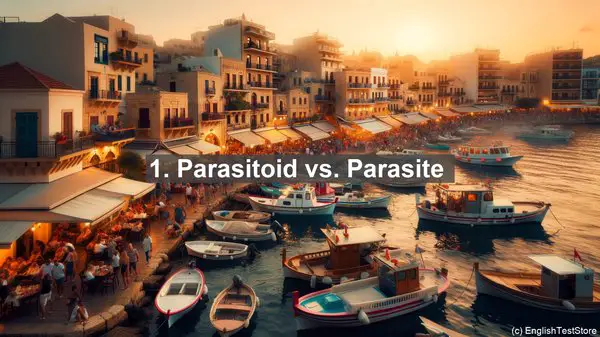Introduction
Today, we’re going to delve into the fascinating world of biocontrol. But before we begin, let’s clear up some common confusions that often arise when discussing this topic.
1. Parasitoid vs. Parasite
While both parasitoids and parasites live off a host organism, there’s a crucial distinction. Parasitoids eventually kill their host, while parasites usually don’t. Understanding this difference is vital in biocontrol strategies.
2. Predation vs. Parasitism
Predation involves one organism, the predator, directly killing and consuming another, the prey. In parasitism, the parasite lives on or in the host, often without immediate death. Recognizing these dynamics helps in designing effective control measures.
3. Invasive vs. Native
Invasive species, introduced to a new ecosystem, can have devastating effects on native species and the environment. Distinguishing between them is essential for preserving biodiversity and maintaining ecological balance.
4. Active vs. Passive Biocontrol
Active biocontrol involves the deliberate release of organisms to control pests. Passive biocontrol, on the other hand, relies on natural enemies already present. Both approaches have their merits and applications.
5. Augmentation vs. Conservation
Augmentation biocontrol aims to increase the population of natural enemies, while conservation focuses on preserving existing populations. The choice depends on the specific situation and goals.

6. Exotic vs. Endemic
Exotic species are non-native to an area, while endemic species are native and found only in that region. Understanding their distribution is crucial in biocontrol planning and risk assessment.
7. Efficacy vs. Efficiency
Efficacy refers to how well a control method works under ideal conditions. Efficiency takes into account factors like cost and environmental impact. Balancing both is essential for sustainable biocontrol.
8. Classical vs. Conservation Biocontrol
Classical biocontrol involves introducing a natural enemy to control a pest. Conservation biocontrol, on the other hand, focuses on enhancing the effectiveness of existing natural enemies. Both approaches have their place.
9. Resistance vs. Tolerance
Resistance is the ability of a host to withstand a pest attack. Tolerance, on the other hand, is the ability to endure damage without significant yield loss. Breeding for resistance and promoting tolerance are important strategies.

10. Direct vs. Indirect Damage
Direct damage from pests is visible and immediate. Indirect damage, often caused by pathogens or changes in plant physiology, may not be apparent initially. Considering both types is crucial in assessing the overall impact.
